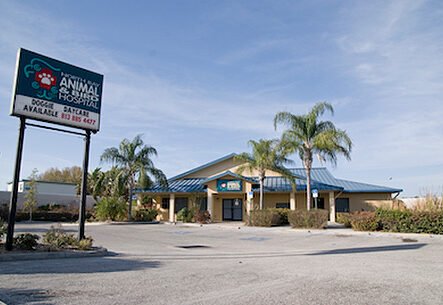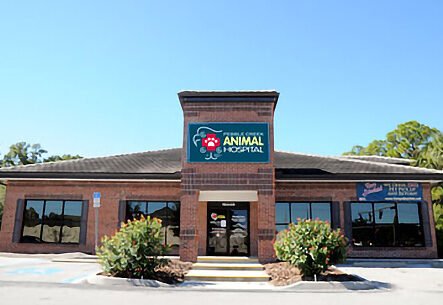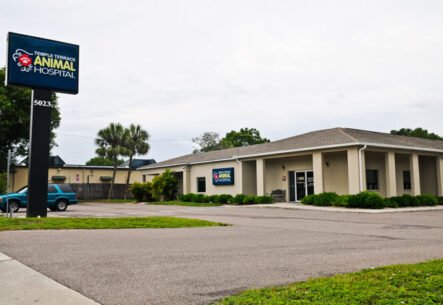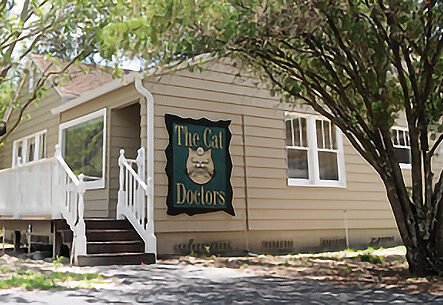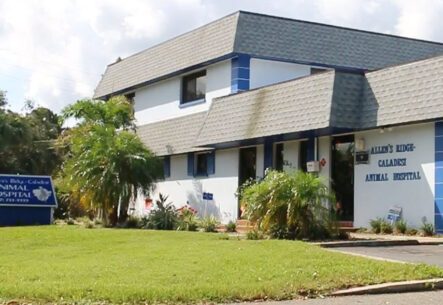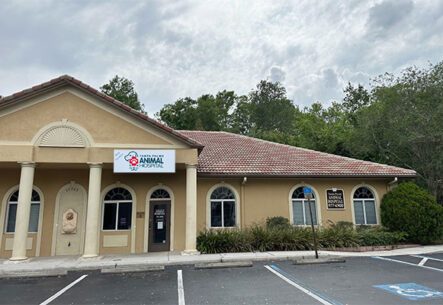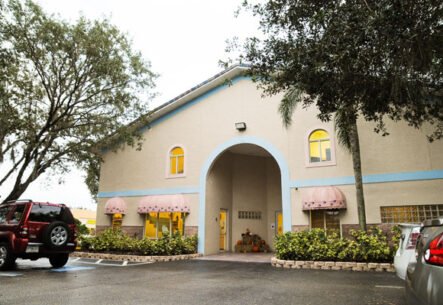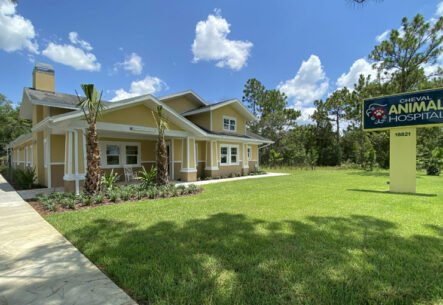Sugar Gliders

What to expect from your Sugar Glider
Sugar gliders make interesting pets. They are about the size of a hamster with soft fur. They are very social animals and are best kept with at least one other sugar glider. If kept alone, they require considerable playing attention and social interaction with their owners. Being nocturnal, their eyes are very large, and they prefer dim lighting. They have specialized incisors designed to gouge trees to extract sap, so they need branches to chew. They have several distinctive vocalizations, from alarm yaps and hisses to low barking groans, screams and high squeaks.
Vital Statistics
- Total length: 11 inches (28 cm)
- Body length: 5 inches (13 cm)
- Body weight: 90-130 grams
- Age of sexual maturity: Male: 12-14 months, Female: 8-12 months
- Life span: 10-14 years
Is your Sugar Glider male or female?
Check the lower abdomen for a pouch opening in the female or for the fur-covered testicles in the male; the bifurcated (forked) penis is located at the base of the tail. Males develop a scent gland on the forehead, which they may rub on the female’s chest. Males also have anal glands and scent glands on the chest. Both sexes scent-mark territory in a freshly cleaned enclosure.
Sugar gliders breed relatively easily in captivity. The gestation period is only 16 days, at which time the infants make their way to the pouch where they attach to a nipple and stay for 2 months. Ten days after they emerge from the pouch they open their eyes. They wean a month after that but remain in the parental nest. Males help with the care and feeding of the babies.
Are Sugar Gliders tame?
Sugar gliders should be socialized by the breeder when they are very young. They usually are not provoked to bite, although they may investigate fingers with their mouth. Tame sugar gliders bond with their owners and like to ride around in pockets.
What do Sugar Gliders do all day?
Sugar gliders sleep during the day and are active at night. Relative to other animals, their cage should be extremely large with many branches and perches for exercise. They should be let out of their cage every evening for supervised play with their owners. During the day they need a wooden nest box in which to sleep.
What should your Sugar Glider eat?
Sugar gliders should be fed a variety of foods appropriate for insectivorous/carnivorous animals. A commercially prepared insectivorous diet should be fed up to 50% of the total intake, particularly for active breeders. Leadbeater’s mixture (see recipe below) can be cooked and fed as the other primary food source (approximately 25%). In addition, 20-25% of the daily intake by volume can be made of chopped produce — specifically apple, grapes, mango, papaya, carrot, sweet potato — dusted with a vitamin/mineral powder.
Approximately 5-10% of the daily intake may include hard-cooked egg yolk or a variety of pet industry-raised insects (crickets, mealworms, waxworms or moths, all fed calcium-enriched feed or dusted with a mineral supplement). Nectars formulated for lories (a nectar-eating parrot) can be given as a fruit portion substitute or as an occasional treat.
Leadbeater’s Mixture:
- 150 ml warm water
- 150 ml honey
- 1 shelled hard-boiled egg
- 25 g high protein baby cereal
- 1 tsp vitamin/mineral supplement
Mix warm water and honey. In separate container, blend egg until homogenized; gradually add honey/water, then vitamin powder, then baby cereal, blending after each addition until smooth. Refrigerate.
How to keep your Sugar Glider healthy, happy and safe
- Purchase a captive-raised animal because it is usually healthier, of known age, and has adapted as a companion animal.
- Take your sugar glider to an exotic animal veterinarian for a physical examination and fecal check for parasites.
- Keep environmental temperature between 70-90 F.
- Heat supplementation to an area of the sugar glider’s cage is necessary in most homes.
- Frequently clean enclosure and nest box so feces and urine won’t accumulate.
- Feed fresh food in the evening.
- Provide fresh water every day in a crock (elevated off the floor of the cage to prevent contamination) or sipper bottle.
- Provide branches from nontoxic trees, such as apple or citrus, for climbing and chewing.
Housing for your Sugar Glider should:
- be as large as possible, at least 2 cubic feet in size (24” x 24” x 48”).
- have wire sides with spacing no more than 1 inch square to prevent escape.
- have a wire bottom and pull out tray for easy cleaning.
- include a tamper-free cage door lock.
- provide nest boxes that are attached high in the cage.
- have shredded paper towels or recycled newspaper pelleted bedding material to line nest box.
- have food and water crocks located to prevent contamination (not underneath branches).
It is important to prevent Sugar Gliders from accessing:
- excessive fat in the diet (peanuts, seeds)
- chocolate, refined sugars
- processed human foods with preservatives
- pesticides
- cedar shavings
- branches from toxic trees
- bright lights or direct, unfiltered/unshaded sunlight
- excessive humidity
- dogs, cats, ferrets and small children
- unsupervised freedom in the home
- rapid changes in temperature
- uncovered light bulbs
What your veterinarian looks for in a healthy Sugar Glider
- Bright eyes
- Moist, pink nose
- Pink gums and mucous membranes
- Clear ear canals
- Ability to grip with all four feet
- Smooth fur coat
- Good elasticity of gliding membrane
Most common disorders of Sugar Gliders
- Malnutrition
- Trauma (fractures, injuries)
- Self-inflicted wounds (particularly solitary animals)
- Stress-related disease: coprophagia (eating fecal material), hyperphagia (overeating), polydipsia (overdrinking), behavioral signs such as pacing, self-chewing
- Intestinal parasites
- Pneumonia
- Diarrhea, gastroenteritis, constipation/impaction
- Hind leg paralysis
- Blindness/cataracts
- Burns (from landing on hot lamp bulbs)
Many common disease conditions in sugar gliders are the result of improper feeding. Visiting your exotic animal veterinarian for routine health checks will help prevent many diseases and support you in having a long, satisfying relationship with your sugar glider. For help in finding a veterinarian in your area who has experience with sugar gliders, visit the International Sugar Glider Association (ISGA) and click on “Veterinarians.”
Background Information
Sugar gliders are tiny marsupials that are native to New Guinea and Australia. They inhabit open forests, where they live in trees as family units. Sugar gliders move from tree to tree using their gliding membrane that extends from their forepaws to their ankles. In this respect only, they resemble the American flying squirrel. Their furry tail helps serve as a rudder and is somewhat prehensile. Free-ranging sugar gliders are omnivorous. Their natural diet in the winter includes the “sugary” sap of various eucalyptus trees. During the rest of the year, they are primarily insectivorous, feasting on moths, beetles, insect larvae and spiders. Fruit is not a major component of the free-ranging diet. Being a marsupial, sugar gliders bear young that complete their development in an external pouch. Before purchasing a sugar glider, one should inquire about state and local laws regarding ownership and obtain proper permits or licenses.
Courtesy of Zoological Education Network
Tampa, FL 33615 (View map)
Tampa, FL 33647 (View map)
Tampa, FL 33617 (View map)
Tampa, FL 33647 (View map)
